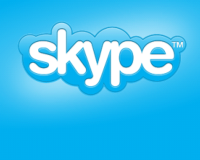Hey, there!
I coach voice over talent in a number of areas, including the traditional performance coaching for VO artists. And I love the transformations that occur during coaching sessions (I call them private workouts).
When I work out with someone, I can either do it live, in-person in my Los Angeles studio, or I can do it live and in-person, but over Zoom, the audio and video conferencing system.
And lately, I’ve suggested far more often that my clients and I hold our sessions via Zoom, even if they live within driving distance – for one very important reason.
It’s simple: you’ll be working with your equipment, in your space, with your environment around you, and your equipment’s positioning – plus, I’m able to see your body position with regard to the mic, and how you address your mic.
Plus, you can share your computer’s screen with me so I can help you adjust Audacity if need be.
That all means you don’t have to transfer what you’d learn in an in-studio session (my studio, not yours) to try to map it to your studio’s particular set-up. You actually get instant use of what we discover together, and can apply it immediately to your day-to-day working environment.
As I’ve watch engaged, enthusiastic students and clients make great use of their Zoom workouts with me, I’ve jotted down some of their best practices. Use these, and you’ll get a lot more out of the time we spend together.
Here’s what you should do to prepare for your Zoom workout session with me.
1 Make sure you download the latest version of Zoom. Once we set a date, I’ll send you an invitation to my Zoom room.
2 Adjust your audio settings. Well before our session, open Zoom’s preferences and adjust your audio inputs and outputs. You’ll find this by going to the Zoom menu, choosing Preferences, then clicking on the Audio icon.
Once in your Audio settings, be sure to select your AT-2020 USB Plus for both input and output. Of course, if you use a different mic than that, select whatever mic or USB bridge you use for your voice over work appropriately. The settings will usually be the same settings you choose for input and output in Audacity.
Make sure you also de-select Automatically adjust microphone volume. Zoom has a nasty habit of making all of your apps automatically change input levels if you select that.
3 Make sure your studio space is quiet and well lit. Make sure your door is closed and any fans or lights that make noise are off. Do make sure that you are well-lit, camera ready and easily seen, and that your equipment is also easily seen. You can see this on your video preferences screen: your camera will be turned on and you’ll be able to see yourself.
Adjust your camera so I can see both your head and your microphone.
4 Make sure you have the right camera selected.. In some cases, there will only be one choice.
Whatever cameras you might have listed, make sure the right one is capturing your lovely image.
5 Have your questions written down. If we dispatch with what you have for your clear goal with me, we can explore the other things you need. One of my favorite questions is “How can I help you?” and “What would you like?” Have your laundry list of questions you’d like answered somewhere in a notebook or a text file, so you can ask those if time allows.
In the comments below, share with all of us your best practices when it comes to Zoom. Any tips you want to share?
Oh, and by the way – if you want to schedule some time together, just visit the VO2GoGo Coaching page to get the skinny on how that all works.
Hope this helps.
David


Excellent info. I’m going to my Sykpe and implement and try suggestions and checklist. This is good advise for working in the furure with you and other need’s.Thank you Steve
I have a monitor hooked up to my MacMini (for an extra quiet working environment in the booth). But that means there is no built-in camera. Is there a webcam you might recommend?
I really love the Logitech C920!